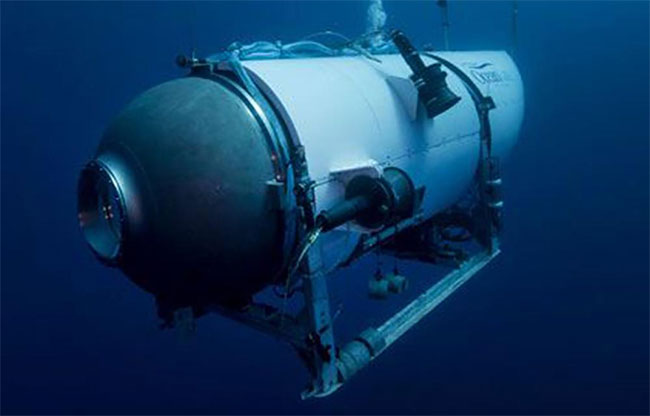Deep-sea craft carrying 5 people to Titanic wreckage reported missing, search underway
vanish in a matter of decades as holes yawn in the hull and sections disintegrate.
The initial group of tourists in 2021 paid $100,000 to $150,000 apiece to go on the trip.
Unlike submarines that leave and return to port under their own power, submersibles require a ship to launch and recover them. OceanGate hired the Polar Prince to ferry dozens of people and the submersible craft to the North Atlantic wreck site. The submersible would make multiple dives in one expedition.
The expedition was scheduled to depart from St. John’s, Newfoundland, in early May and finish up at the end of June, according to documents filed by the company in April with a U.S. District Court in Virginia that oversees Titanic matters.
CBS journalist David Pogue, who went on the trip last year, noted his vessel got turned around looking for the Titanic.
“There’s no GPS underwater, so the surface ship is supposed to guide the sub to the shipwreck by sending text messages,” Pogue said in a segment aired on CBS Sunday Morning. “But on this dive, communications somehow broke down. The sub never found the wreck.”
The submersible, named Titan, is capable of diving 4,000 meters or 13,120 feet “with a comfortable safety margin,” OceanGate said in its court filing.
It weighs 20,000 pounds (9,072 kilograms) in the air, but is ballasted to be neutrally buoyant once it reaches the seafloor, the company said.
The Titan is made of “titanium and filament wound carbon fiber” and has proven to “withstand the enormous pressures of the deep ocean,” OceanGate stated. OceanGate told the court that Titan’s viewport is “the largest of any deep diving submersible” and that its technology provides an “unrivaled view” of the deep ocean.
In a May 2021 court filing, OceanGate said the Titan had an “unparalleled safety feature” that assesses the integrity of the hull throughout every dive.
At the time of the filing, Titan had undergone more than 50 test dives, including to the equivalent depth of the Titanic, in deep waters off the Bahamas and in a pressure chamber, the company said.
During its expedition in 2022, OceanGate reported that the submersible had a battery issue on its first dive, and had to be manually attached to its lifting platform, according to a November court filing.
“In the high sea state, the submersible sustained modest damage to its external components and OceanGate decided to cancel the second mission for repairs and operational enhancements,” the filing stated.
More missions, however, followed. The company reported that 28 people visited the wreck site last year.
Experts said Monday that rescuers face steep challenges.
Alistair Greig, a professor of marine engineering at University College London, said submersibles typically have a drop weight, which is “a mass they can release in the case of an emergency to bring them up to the surface using buoyancy.”
“If there was a power failure and/or communication failure, this might have happened, and the submersible would then be bobbing about on the surface waiting to be found,” Greig said.
Another scenario is a leak in the pressure hull, in which case the prognosis is not good, he said.
“If it has gone down to the seabed and can’t get back up under its own power, options are very limited,” Greig said. “While the submersible might still be intact, if it is beyond the continental shelf, there are very few vessels that can get that deep, and certainly not divers.”
Even if they could go that deep, he doubts they could attach to the hatch of OceanGate’s submersible.
Source: The Associated Press
-Agencies

